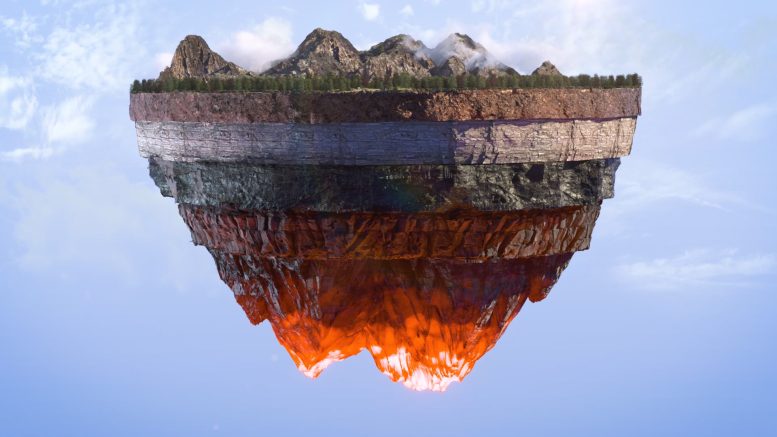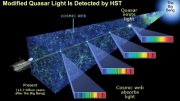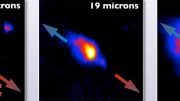
Geothermal energy—the heat beneath our feet—has the potential to “transform the U.S. energy landscape,” according to the U.S. Department of Energy. But there are challenges along the way. Credit: Quaise Energy
Tapping into the heat below our feet as a form of renewable, clean energy has been attracting greater attention as the world moves toward alternatives to fossil fuels in the battle against climate change. A 58-page report released on March 18 by the U.S. Department of Energy focuses on “the potential of next-generation geothermal power to transform the U.S. energy landscape.”
But there’s work to be done.
In a paper presented last month (February) at Stanford University, a geothermal scientist with 16 years in the field described the gaps in research and development that must be tackled before the resource can potentially power the planet. That said, “the tools to solve the scientific and engineering challenges are available. It’s a matter of international and multidisciplinary collaboration, system integration, and demonstration projects,” said Trenton T. Cladouhos.
Cladouhos, who recently joined Quaise Energy as Vice President of Geothermal Resource Development, coauthored the paper with Owen A. Callahan of En Échelon Geosolutions. The work was presented at the 49th Stanford Geothermal Workshop, an annual gathering of geothermal experts from across the globe, which Cladouhos said was “the biggest ever.”
He continued, “The industry is busy unlocking geothermal’s potential at all temperatures and places. It’s never been a better time to be in the geothermal industry.”
Superhot Rock Energy
Cladouhos’ remarks focused on the challenges associated with extracting heat from far under the ground where superhot rocks sit at temperatures of more than 707 degrees Fahrenheit (375 °C). Water piped through those areas would become supercritical. This steam-like phase can carry some 5-10 times more energy than regular hot water, making it an extremely efficient energy source if it could be piped to turbines that convert it into electricity.
“Recovery of just 2% of the thermal energy stored in hot rock 3 to 10 km [2 to 12 miles] below the continental U.S. is equivalent to 2,000 times the primary U.S. energy consumption” annually, he and Callahan write in their paper.
One key problem to that end is simply getting there. The drills used by the oil and gas industries aren’t designed to withstand the extreme temperatures and pressures miles down, where the mother lode of geothermal energy lies. That’s why Quaise is working on a completely new way to drill using millimeter wave energy (cousins to the microwaves many of us cook with) that can literally melt and vaporize rock. Quaise’s hybrid approach would use conventional drilling technologies near the surface (what they were optimized for), followed by millimeter waves for powering through the basement rock below.
But tapping into superhot rock is only the first challenge. Extracting the heat is a puzzle that’s at least as difficult as getting there, Cladouhos said.
Researchers around the world are working on engineered geothermal systems (EGS), essentially underground radiators or heat exchangers, that aim to do just that. There are a variety of approaches being developed—and used in the field—by companies such as Eavor and Fervo Energy, but none have been demonstrated at temperatures over about 200 °C.
“If we really want geothermal to be a game changer, we have to operate at superhot temperatures, or over 375 °C,” Cladouhos said.
Bridging R&D Gaps
Enter the need for adaptations to existing EGS systems or even completely new approaches. Cladouhos’ talk addressed 14 gaps in research and development that must be bridged to get there. These are organized into three categories: basic science, tools & infrastructure, and stimulation & reservoir technology.
One key gap is the need for more data about rock mechanics at extreme depths and pressures. That data in turn will allow geothermal scientists to better model these systems. Fortunately, “we can learn from looking at rocks that were once down at these superhot conditions but are now exposed at the surface or in mines,” Cladouhos said.
Another example involves stimulation design, or how to create the most economical system for moving water through superhot rocks to capture their energy. For example, some of the shallow geothermal systems in operation today involve creating fractures in the rock, which creates more surface area for heat transfer. But fracturing the rock at superhot depths and temperatures “is another unknown,” Cladouhos said.
A third gap involves well completions, or how to stabilize wells exposed to the ultra-harsh conditions associated with the resource. Wells drilled to superhot temperatures in countries including Iceland, Japan, the United States, and Italy have all eventually failed.
An Iterative Process
Cladouhos emphasized that investors must understand that the path to accessing superhot rock will be iterative. “The first-of-a-kind superhot rock EGS project will fill many of the knowledge gaps and likely reveal some new gaps. Reaching our commercial goals will require an iterative process of technology development and field tests,” he said.
Nevertheless, he and Callahan are optimistic about success: “Although superhot rock geothermal will push the limits of many subsurface tools and is beyond the bounds of current hydrothermal and EGS projects, it should be noted that humans safely and routinely operate equipment that contains materials above 375 °C. Coal power plants burn at 550 °C, nuclear power plants at 700 °C, and pizza ovens at 400 °C… We can engineer equipment to access, contain, and extract energy from the global [superhot rock] resource — engineers and scientists need the incentive to do so.”
Reference: “Heat Extraction from SuperHot Rock – Technology Development” by Trenton T. Cladouhos and Owen A. Callahan, 14 February 2024, 49th Stanford Geothermal Workshop.
The Stanford paper was commissioned by the Clean Air Task Force, and includes contributions from Terra Rogers and Bruce Hill of the CATF.









Be the first to comment on "Unleashing Earth’s Fury: How Next-Gen Geothermal Could Redefine Renewable Energy"